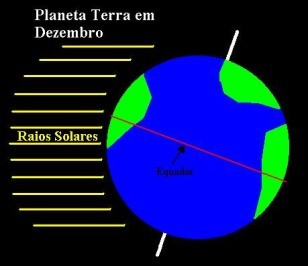For the development of life on planet Earth, light and heat are needed and the person responsible for providing them is the Sun. The heat emitted by this star is fundamental for living beings. Of all the light emitted, only 51% reaches the lithosphere, the remaining 49% is adhered to the atmosphere.
The heat and light from the rays coming from the Sun that reach the Earth's lithosphere are called insolation.
The amount of sunshine varies according to geographic position, since the Earth has a spherical shape that determines the angle of incidence of the sun's rays. The further away from the equator the lesser the insolation.

Do not stop now... There's more after the advertising ;)
In areas close to the equator, the rays reach the Earth's surface forming a 90º angle, by on the other hand, in the regions of the poles the rays fall slanted, so it receives little heat and luminosity.
As the sun's rays strike the earth's surface, the continental masses and oceans concentrate and release a portion of received energy. This reflected energy heats the atmosphere, like a greenhouse, called radiation.

If this phenomenon did not exist, the Earth would have a very cold temperature.
Eduardo de Freitas
Graduated in Geography
Brazil School Team
Curiosities - geography - Brazil School
Would you like to reference this text in a school or academic work? Look:
FREITAS, Eduardo de. "Terrestrial heating"; Brazil School. Available in: https://brasilescola.uol.com.br/geografia/aquecimento-terrestre.htm. Accessed on June 27, 2021.



